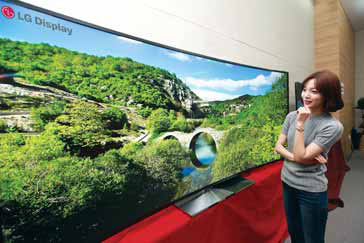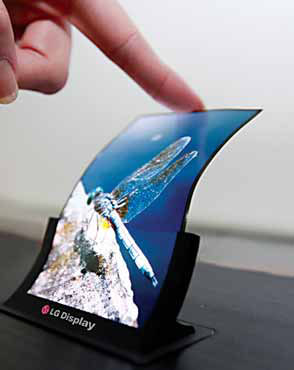
With the Brand Trust Report, 2015 Trust Research Advisory crowning it India’s numero uno trusted brand, here’s taking a closer look at the journey of an MNC that started almost 70 years ago in Korea, but found enthusiastic takers worldwide
Amidst the rough and tumble of the worldwide economic crisis, LG Electronics India recently went ahead and launched two new ad campaigns. While the first, ‘No rubbing, no scrubbing’ campaign announced the launch of LG”s first automatic washing machine equipped with the ‘jet spray’ technology, the second, is the ‘Thank you’ corporate campaign to thank customers for voting LG as India’s No.1 trusted brand.
Stating that it was a proud moment for them, Niladri Datta, Head, Corporate Marketing said, “it is truly inspiring when your customers’ place their full faith in you. Hence, this campaign to thank them for their support.”
Not bad at all for a company that started almost 70 years ago in another South Asian Country-- South Korea. Since then, LG or “Life’s Good” with its emphasis on technology and tomorrow has resonated with thousands world-wide.
LG Corporation (formerly Lucky Goldstar) is a South Korean multinational conglomerate corporation, born in 1947.
In 1952, Lak-Hui (pronounced ‘Lucky’, currently, LG Chem) became the first Korean company to get into plastic business. As the company expanded its base, it set up Goldstar Co. Ltd (currently, LG Electronics Inc.) in 1958. Both companies Lucky and Goldstar merged and formed Lucky Goldstar.
In 1995, to compete better in the West, the Lucky-Goldstar Corporation was renamed ‘LG’. The company also associates the letters LG with the company’s tagline ‘Life’s Good’. Since 2009, LG has owned the domain name ‘LG.com’.
LG Corporation is a holding company that operates worldwide through more than 30 companies in the electronics, chemical, and telecom fields.
LG Electronics India Pvt. Ltd., a wholly-owned subsidiary of LG Electronics, South Korea was established in 1997. It is one of the most competitive brands in consumer electronics, home appliances, IT hardware and mobile communications space.
In a short span, LG has earned the reputation of being a premium brand and the LOGO to watch out for.
Interestingly enough, LGEIL’s manufacturing unit at Greater Noida is one of the most eco-friendly units among all LG manufacturing plants in the world. The second Greenfield facility is at Ranjangaon, Pune with the the capacity to manufacture LED TVs, air conditioners, washing machines, refrigerators, and monitors.

Without a doubt, the LG logo is one of the most easily recognizable ones ever, and is a must-study for anyone interested in how brands are built and sustained. Sophisticated, simple and utterly meaningful, each component of the logo stands for a core value. While the overall design suggests fast growth and expansion, the One eye in the logo stands for its numero uno position and standing as well as focus on excellence.
The space on the upper right hand depicts the company’s reputation as the leading authority in the fields of creative thinking, innovation and adaptability. Similarly, the use of red stands for passion, while grey stands for technology and reliability.
The capital letters L and G are positioned inside a circle to center their ideals in the best spirit of humanity.
“Global, tomorrow, energy and technology” are some of the other buzzwords that the corporation focuses on.
There are two versions of the logo: corporate logo and 3D logo.
The updated 3D logo retains the heritage and equity of the corporate logo, while aligning with our new positioning. It was redrawn to strengthen the visual impact of our symbol mark and help communicate their attributes.
While LG Electronics India had a turnover of Rs.18,500 crore in 2014, figures were slated to grow to Rs.23,500 crore in 2015 and the company launched as many as 86 new products in the consumer durables section last year.
Their mobile phones and flat screen TV sets especially contributed to the performance.
In keeping with its ‘tomorrow-centric’ image the ad campaign “No Rubbing, No Scrubbing…” – for LG’s first twin-tub automatic washing machine gained momentum.
The ad shows how this new product with its jet spray, will give perfectly-rinsed clothes, free from stains, with ease. In keeping with the company philosophy, the technology also cuts back on energy by a whopper of a 40 percent.
The last few years have consistently seen consumer sentiment on a positive upswing. The pricing and genuine quality of the products, the spiffy and smart advertising that is slick and to the-point coupled with continuous upgradation of product ranges have all worked in its favour
Even as it came to India in 1997, the biggest challenge was building a brand image. While home grown players like Onida and Videocon had a steady fan base, Japanese biggies like Sony, Akai and Panasonic had brand equity on their side. With a failed TV set adding to their woes, right at the outset, the group reworked its strategy. And boy, did it work!
For starters, they hired local professionals, and took on competitors with better pricing-always a good idea in price-conscious India.
Innovative marketing strategies, keeping local mores in mind, as well as heavy duty research to come up with innovative technologies in the consumer electronics and home appliance segment worked.

The last few years have consistently seen consumer sentiment on a positive upswing. The pricing and genuine quality of the products, the spiffy and smart advertising that is slick and to-the point, coupled with continuous upgradation of product ranges have all worked in its favour.
Focusing mainly on the premium and midrange smartphone categories, LG launched 30 new models in the smartphone category by December 2015. Apart from this, the company generously spends on marketing as well as Research & Development, as evinced by the Rs.1,000 crore investment it divided equally between the two last year; thereby maintaining the perfect balance between showmanship and substance.
Similarly, the company is also looking at sponsoring the hugely popular Indian Premier League Twenty20 cricket in 2016.
With as high as 35 percent of its sales coming from its TV sets, the company is looking at further growth in this segment. MD Soon Kwan was quoted as saying that with more and more consumers asking for bigger screens, “The 42 inch plus segment will get bigger by the day and the contribution of the segment would be as much as 45 percent of the overall category for the TV market in India.”
And whatever 2016 unfolds, this is not a brand to sit on its laurels.
By Kalyani Sardesai